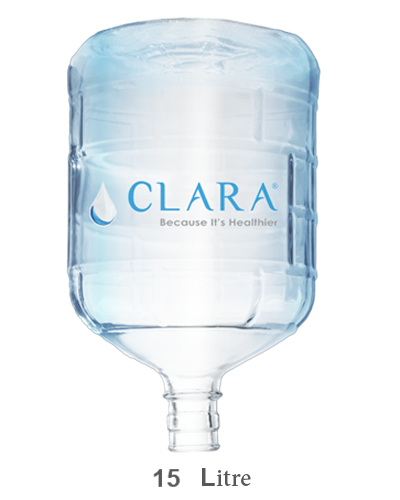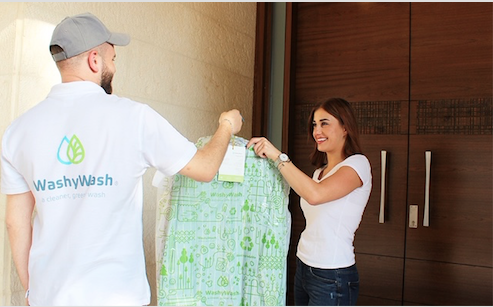WHAT IF... You eliminated negative environmental impacts of your operations?
Eco- or environmentally friendly manufacturing protects the planet from exploitation and conserves natural resources. Products are made from sustainable materials, while waste is reduced through remanufacturing, reuse and recycling. In addition, being eco-efficient or eco-friendly can reduce your business’ costs through reduced energy use or lower transportation costs. It can also be a means to improve your brand and increase customer loyalty.
The Don’t be mean, be green innovation strategy provides you with a practical guidance on how to develop such an eco-efficient approach by effectively including environmental criteria in the design stage of your products and services.
Turning challenges into opportunities
Many businesses rely on production processes that harm the environment. Depending on scale, manufacturing processes are often associated with high volumes of pollution, emissions and waste. At the same time, the environmental footprint of businesses is often linked to inefficient or outdated production and delivery processes.
If chosen wisely, sustainable practices can be rewarding both for the environment and for your business. You can save money by reducing waste and increasing efficiency, and you can attract environmentally conscious consumers and employees by improving your brand and differentiating yourself from competitors.
As customers are increasingly aware, committing to using environmentally conscious methods and materials will increase customer satisfaction and loyalty. More and more consumers are also willing to pay more for sustainable products, which might allow you to generate more revenues in the future.
Decreasing emissions, recycling waste and acting environmentally responsible can also decrease safety risks and improve the health of surrounding communities. For example, avoiding chemical pollutants in the production can decrease the risk of cancer and other illnesses. Cleaner air and water will also improve the general well-being of the local population.
Of particular relevance for start-ups is the fact that more than 80% of environmental impact and costs of products and services are determined at the design stage (FARRENY, R. et al. 2015). This means that you have an opportunity to directly take ecological aspects into consideration when conceiving your new products or services. This may allow you to gain a competitive advantage vis-à-vis existing offers that have not been optimised from an ecological point of view.
Moving towards a strategy
The Don’t be mean, be green innovation strategy is about developing an eco-efficient (or eco-friendly) approach that simultaneously reduces costs and environmental impacts of your business by minimizing or reusing waste, preventing pollution or improving technologies. Eco-efficiency is ‘a management philosophy that encourages businesses to search for environmental improvements that yield parallel economic benefits’ (WBCSD, 2006).
In this sense, the Don’t be mean, be green strategy goes beyond mere corporate social responsibility (CSR) activities that some companies even tend to misuse as ‘greenwashing’ to compensate for (or distract from) other unsustainable practices. It is about fully integrating eco-efficient methods and materials along the life cycle of your product or service to increase your success through a truly green business model that uses inputs efficiently and positions you with a sustainability-oriented value proposition.
But how do you practically implement eco-efficiency and where do you start?
If you are conceiving a new product or service, the design stage is a great opportunity to evaluate how your business performs in environmental terms. No matter if you have not yet started your business or if you are already operating, you could reveal hidden potential by investing some time into analysing your existing activities along the value chain and the raw materials you use.
When designing a product, you should consider:
- Materials and resources
- Production process
- Packaging and distribution
- Use and maintenance
- End-of-Life management
When eco-designing your product, you identify which type of components, materials and resources you are going to use and where they are coming from. The consumption of raw material bears great opportunities to reduce costs, e.g. when you provide the same product quality with fewer or recycled materials. When it comes to the production process, you should analyse each stage with regards to options for eco-improvements, including the related consumption of energy, water and waste. New efficient technologies might help you to improve the way you craft your product. It is also very useful to assess how you could environmentally improve your Packaging and distribution processes. In many places, small and sustainable packages are delivered on foot or by bicycle. The use and maintenance phase is related to the customer interaction with the product. This can be in terms of the direct energy consumption or maintenance of the product. Promoting shared use or an easy form of repair can help you to create a long-lasting product. What happens at the end of the product life depends largely on how you have designed your product. A very good eco-design could make your product ‘immortal’ or biodegradable to eliminate waste.
In the case of services, you should analyse how you can reduce negative environmental impacts in the following areas:
- Service
- Sales and Communication
- Infrastructure
Eco-designing services also unlocks interesting opportunities to innovate while creating higher added value. Here, you have the opportunity to (in)directly influence your customer’s behaviour and environmental attitude. For example, a mobile app with information and incentives could help users to make the right choice in the supermarket, fostering responsible consumption and supporting organic agriculture (ibid, p. 84). By promoting environmental education or compensation policies you can further foster responsible behaviour. Although, you are not offering a product, it is crucial to consider and map all the tangible components you need to serve your users. Communication and sales activities are key to sell and communicate responsibility, e.g. by green marketing or green labelling.
Finally, you can also create sustainable value from overall management of the infrastructure you use. Think about your overall energy- and water consumption to run your business or other assets you use (ibid).
In each of these stages you can use the
World Business Council for Sustainable Development (WBCSD)’s seven success factors for eco-efficiency, to optimise your product or service design:
- reduce the material intensity of goods and services,
- reduce the energy intensity of goods and services,
- reduce toxic dispersion,
- enhance material recyclability,
- maximise sustainable use of renewable resources,
- reduce material durability and
- increase the service intensity of goods and services (WBCSD, 1992).
Making money while saving the planet sounds tempting, but - especially for existing businesses – enhancing your eco-efficiency may imply initial investments, ranging from a thorough analysis to identify the best strategies and methods for realising efficiency to buying machinery and training staff.
Keep in mind that this strategy is not mainly about reducing costs. It is about building a more sustainable business, which is a key aspect to develop a competitive brand. To leverage this outcome, you should also adapt your marketing approaches and customer relations to increase customer loyalty based on the promise of a sustainable product or service.
Another very interesting opportunity for improving environmental performance while saving costs or obtaining new revenue streams is reselling or reusing waste from other markets. What is waste (=cost) for one industry could become a very cheap material for another (=savings!). Go to the Swim in Abudance strategy.
Case Study 1
CLARA Waters mission is to use the latest water manufacturing technologies to produce healthy drinking water and deliver it to their customers in glass bottles. As a green company, Clara Water sets high customer service standards and promotes glass over plastic.
CLARA Water is a very good example of how to systematically include environmental criteria in the design stage of a product. Starting with the production process, CLARA Water uses the most fuel efficient environmentally friendly manufacturing equipment. The company puts a special focus on packaging and distribution because the final product is bottled in recyclable glass instead of plastic and the most ecological vehicles available are used for distribution. Besides packaging purposes, recycled glass also serves as a core component of the product - aside from the finest source of water available in Jordan. Looking at the End-of-Life management, CLARA Water has created an ‘immortal’ product, as glass can be recycled (almost) indefinitely. When it comes to sales and communication, CLARA Water positioned itself successfully as a green company and a sustainable brand. The founders understood that communication and sales activities are key to sell and communicate responsibility. The business helps the community by promoting glass over plastic in general and thus contributes to behavioural change. Apart from that, CLARA Water is setting new standards, as their packaging exceeds all FDA laws and regulations in Jordan. Their on-going success is also reflected in the WBCSD’s success factors for eco-efficiency (e.g. enhancing material recyclability and maximising the sustainable use of renewable resources).

CLARA Water Glass Container. Source: www.clarawater.com
Case Study 2
Many dry-clean/laundry shops use risky chemicals with negative impact on the people and the environment. This is where WashyWash comes in. The Jordan company is set out to change how people clean their clothes globally, switching people from the outdated and risky PERC-Dryclean system to eco-friendly cleaning technologies. It started as a simple concept: Give people the best possible cleaning quality with zero health risks, coupled with the best customer service and technology out there.
WashyWash is a good example for the Don’t be mean, be green strategy because it links innovative sustainable technologies with communicating ecological responsibility. Looking at materials and resources, WashyWash uses 100% biodegradable detergents, many of those detergents meet the requirements for the Blauer Engel (Blue Angel) award. The core value of the service lies in offering two eco-friendly cleaning technologies: Eco wet-clean and Eco dry-clean to get rid of toxic chemicals in laundry and dry cleaning. Apart from that, the company uses its own environmentally friendly bags while offering easy pick-up and delivery via an App. WashyWash creates additional sustainable value by optimising the water and electrical consumption in their facilities from an ecological point of view. The founders show and communicate that they really care about the environment and how passionate they are about leading healthier and greener lives. The overall goal is to expand these eco-friendly facilities around the world and make the technology available to everyone.

Customer getting her dry cleaning from Washywash. Source: Washywash
Create your Green Business!: The Handbook for Green Entrepreneurs in the Mediterranean
This book explains all the major steps for setting up your green business project. Designed to provide the necessary theoretical basis, the Handbook describes the methodology, the main concepts and the tools included in the Workbook, and presents different examples of entrepreneurs and their businesses. It will become your essential companion for your green entrepreneur journey.
FARRENY, R et al. switchmed (2015): Create your Green Business!: The Handbook for Green Entrepreneurs in the Mediterranean . switchmed URLCreate your Green Business!: The Workbook for Green Entrepreneurs in the Mediterranean
This book is directly associated with the Handbook. It will help you to put into practice the knowledge you acquired with the Handbook, but above all, to make your project progress more practical.It will guide you through the business creation journey, from a business idea to a green business model. It is conceived from the perspective of a Green Entrepreneur that wants to take an initial business idea and turn it into a feasible green business, following a series of exercises.
FARRENY, R et al. switchmed (2015): Create your Green Business!: The Workbook for Green Entrepreneurs in the Mediterranean . Switchmed URL [Accessed: 09.03.2020]